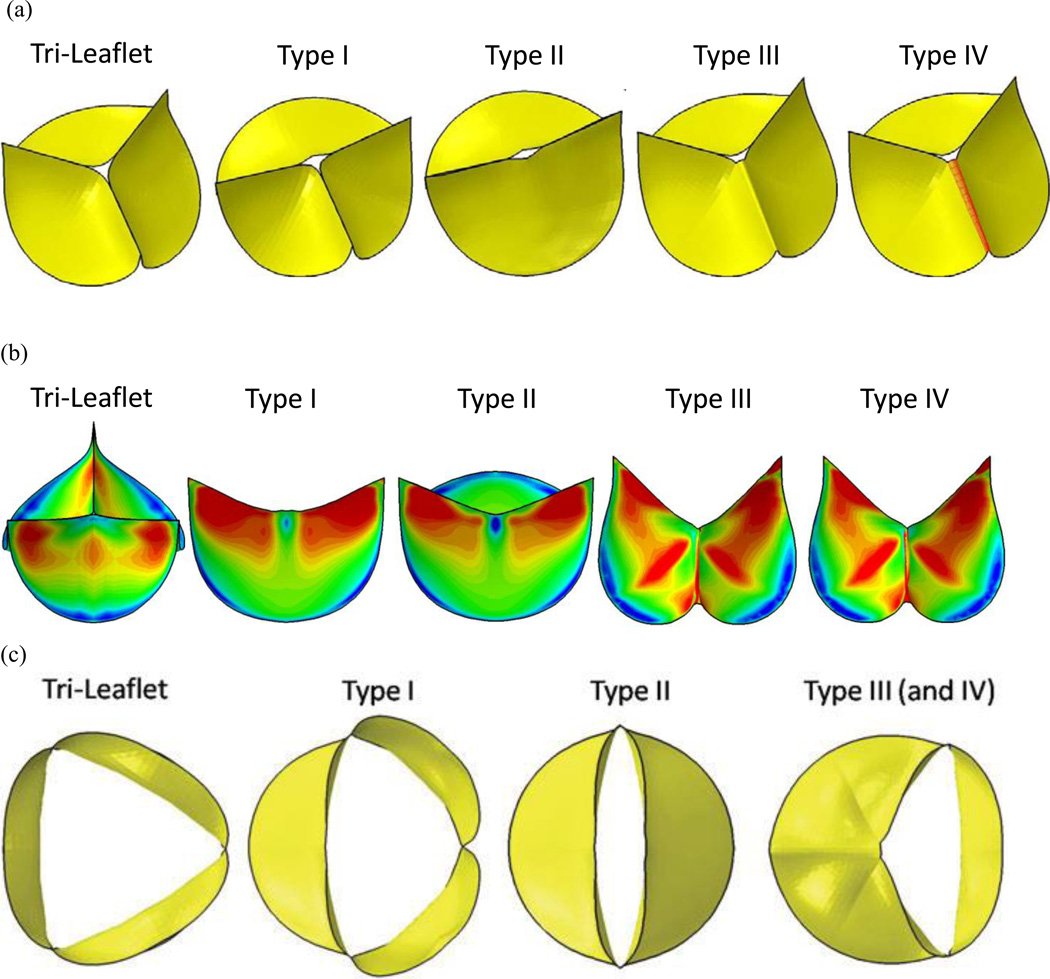Figure 1.
(a) Idealized bicuspid aortic valve geometries employed to study impact of geometry on stresses in valve leaflets (Jermihov et al., 2011) and the alterations in hemodynamics in the ascending aorta (Burken, 2012; Vigmostad et al., 2012). Type I depicts one oversized leaflet and a fusion of two undersized leaflets. Type II is two symmetric leaflets. Type III is a left-right fusion, with a second leaflet similar in shape to a normal TAV leaflets. Type IV employs the same geometry as type III, but with a raphe. (b) The maximum in plane principal stresses from our dynamic simulation during the fully closed position of the valve (c) The corresponding orifice opening of the various valve types in the fully open position. Reprinted from Cardiovascular Engineering and Technology, 2(1): 48–56, 2011 with kind permission from Springer Science and Business Media.

